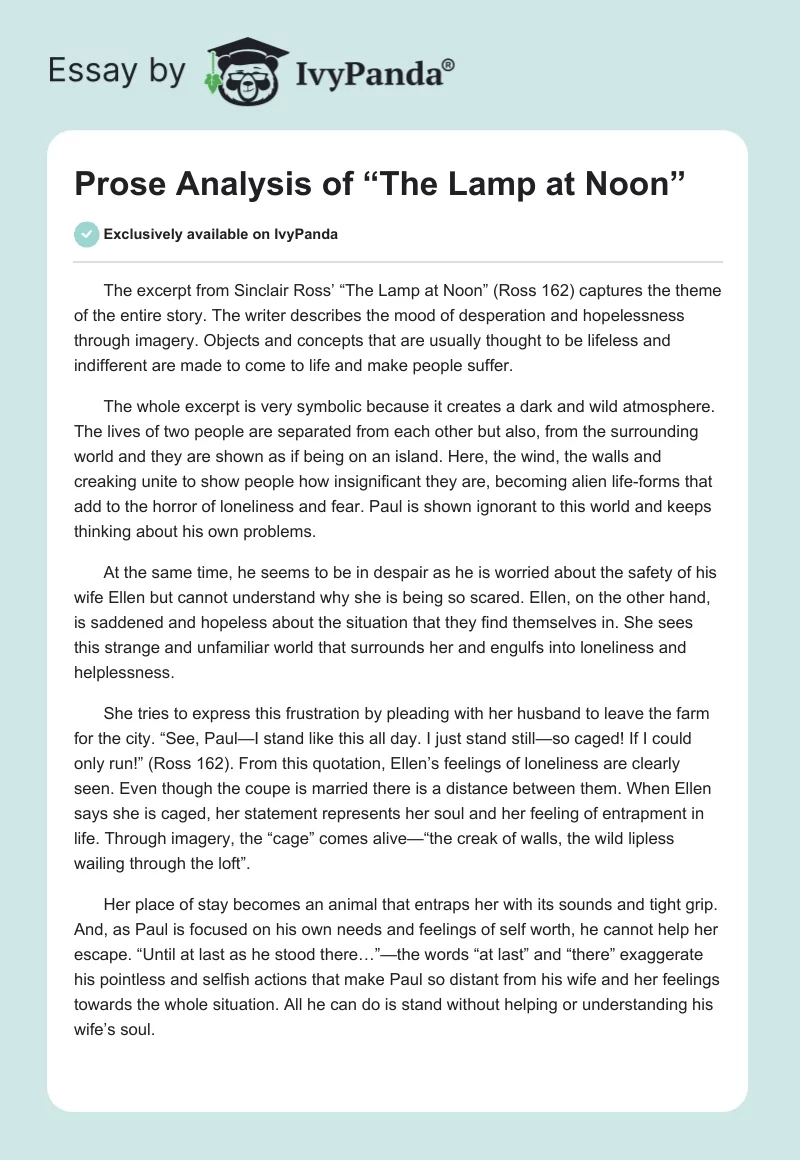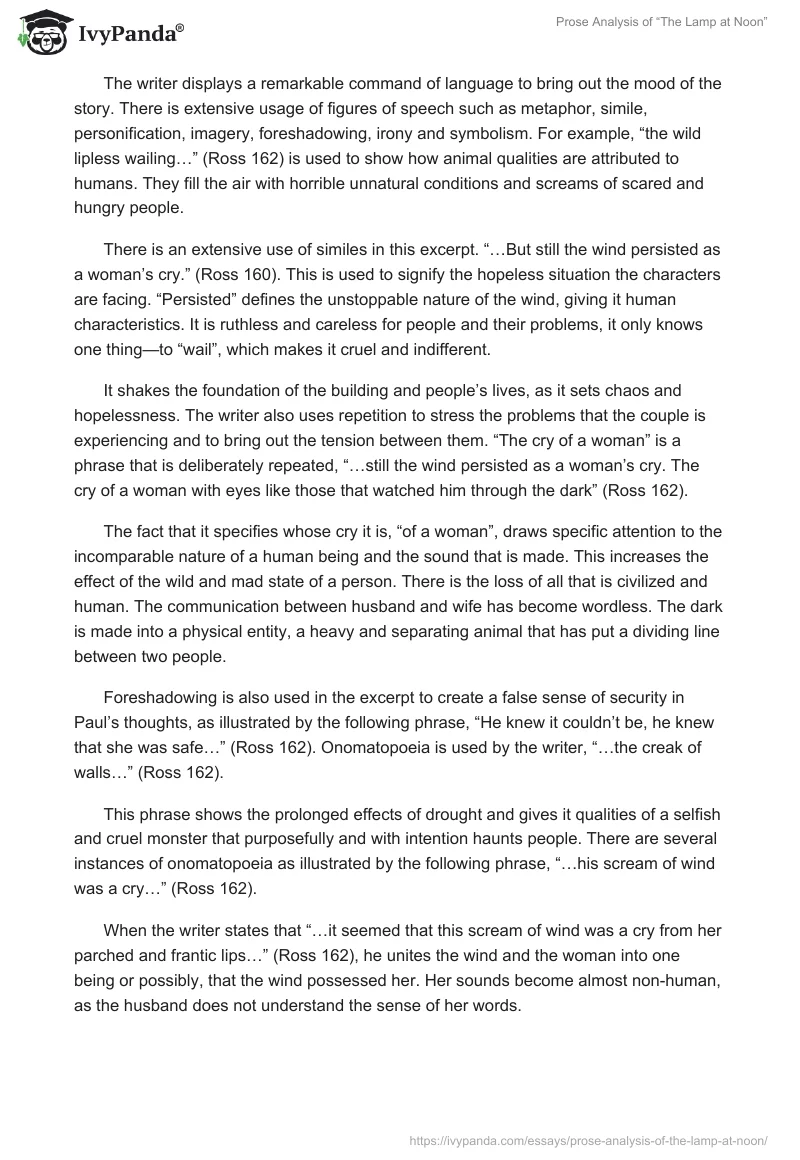The excerpt from Sinclair Ross’ “The Lamp at Noon” (Ross 162) captures the theme of the entire story. The writer describes the mood of desperation and hopelessness through imagery. Objects and concepts that are usually thought to be lifeless and indifferent are made to come to life and make people suffer.
The whole excerpt is very symbolic because it creates a dark and wild atmosphere. The lives of two people are separated from each other but also, from the surrounding world and they are shown as if being on an island. Here, the wind, the walls and creaking unite to show people how insignificant they are, becoming alien life-forms that add to the horror of loneliness and fear. Paul is shown ignorant to this world and keeps thinking about his own problems.
At the same time, he seems to be in despair as he is worried about the safety of his wife Ellen but cannot understand why she is being so scared. Ellen, on the other hand, is saddened and hopeless about the situation that they find themselves in. She sees this strange and unfamiliar world that surrounds her and engulfs into loneliness and helplessness.
She tries to express this frustration by pleading with her husband to leave the farm for the city. “See, Paul—I stand like this all day. I just stand still—so caged! If I could only run!” (Ross 162). From this quotation, Ellen’s feelings of loneliness are clearly seen. Even though the coupe is married there is a distance between them. When Ellen says she is caged, her statement represents her soul and her feeling of entrapment in life. Through imagery, the “cage” comes alive—“the creak of walls, the wild lipless wailing through the loft”.
Her place of stay becomes an animal that entraps her with its sounds and tight grip. And, as Paul is focused on his own needs and feelings of self worth, he cannot help her escape. “Until at last as he stood there…”—the words “at last” and “there” exaggerate his pointless and selfish actions that make Paul so distant from his wife and her feelings towards the whole situation. All he can do is stand without helping or understanding his wife’s soul.
The writer displays a remarkable command of language to bring out the mood of the story. There is extensive usage of figures of speech such as metaphor, simile, personification, imagery, foreshadowing, irony and symbolism. For example, “the wild lipless wailing…” (Ross 162) is used to show how animal qualities are attributed to humans. They fill the air with horrible unnatural conditions and screams of scared and hungry people.
There is an extensive use of similes in this excerpt. “…But still the wind persisted as a woman’s cry.” (Ross 160). This is used to signify the hopeless situation the characters are facing. “Persisted” defines the unstoppable nature of the wind, giving it human characteristics. It is ruthless and careless for people and their problems, it only knows one thing—to “wail”, which makes it cruel and indifferent.
It shakes the foundation of the building and people’s lives, as it sets chaos and hopelessness. The writer also uses repetition to stress the problems that the couple is experiencing and to bring out the tension between them. “The cry of a woman” is a phrase that is deliberately repeated, “…still the wind persisted as a woman’s cry. The cry of a woman with eyes like those that watched him through the dark” (Ross 162).
The fact that it specifies whose cry it is, “of a woman”, draws specific attention to the incomparable nature of a human being and the sound that is made. This increases the effect of the wild and mad state of a person. There is the loss of all that is civilized and human. The communication between husband and wife has become wordless. The dark is made into a physical entity, a heavy and separating animal that has put a dividing line between two people.
Foreshadowing is also used in the excerpt to create a false sense of security in Paul’s thoughts, as illustrated by the following phrase, “He knew it couldn’t be, he knew that she was safe…” (Ross 162). Onomatopoeia is used by the writer, “…the creak of walls…” (Ross 162).
This phrase shows the prolonged effects of drought and gives it qualities of a selfish and cruel monster that purposefully and with intention haunts people. There are several instances of onomatopoeia as illustrated by the following phrase, “…his scream of wind was a cry…” (Ross 162).
When the writer states that “…it seemed that this scream of wind was a cry from her parched and frantic lips…” (Ross 162), he unites the wind and the woman into one being or possibly, that the wind possessed her. Her sounds become almost non-human, as the husband does not understand the sense of her words.
Works Cited
Ross, Sinclair. “The Lamp at Noon.” The Harbrace Anthology of Short Fiction, 4th ed. Eds Jon C. Stott, Raymond E. Jones, and Rick Bowers. Toronto: Nelson, 2006. 155-162. Print.


